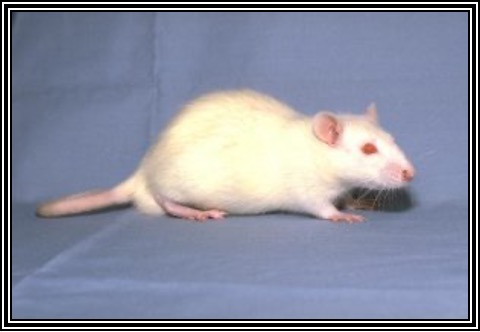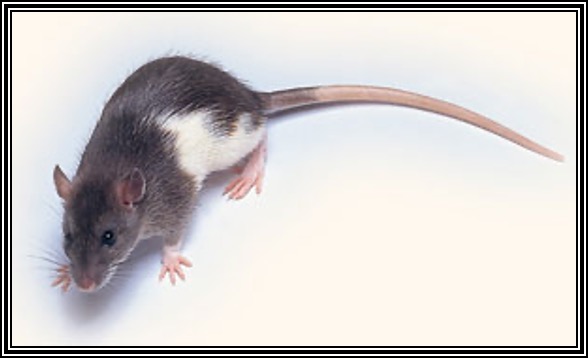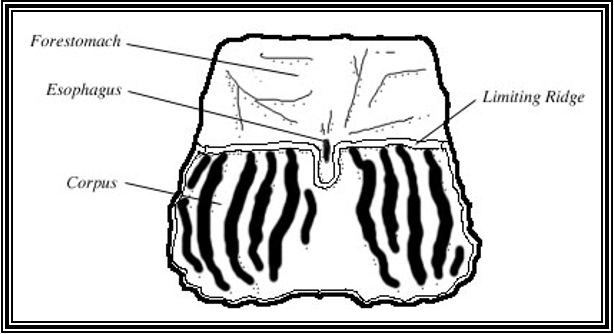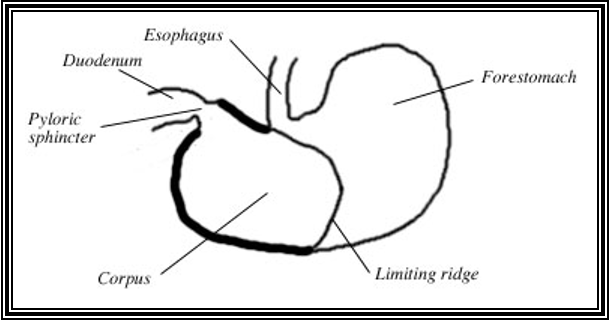Laboratory Animal Medicine: Rats & Mice
1/77
Earn XP
Description and Tags
Flashcards for VET 215 - Laboratory Animal Medicine: Rats & Mice
Name | Mastery | Learn | Test | Matching | Spaced |
|---|
No study sessions yet.
78 Terms
Rattus norvegicus
Laboratory rat
Common name for Rattus norvegicus
Brown or Norway Rat
Order of Rattus norvegicus
Rodentia
Family of Rattus norvegicus
Muridae
Common name of Mus musculus
Swiss albino mouse or house mouse
Mus musculus
Laboratory mouse
Peromyscus maniculatus
Deer mouse
Most common native North American mammal
Stock
A rat/mouse that has been randomly bred, also referred to as outbred.
Strain
a rat/mouse that has been inbred (when at least 20 generations of brother-sister or parent-offspring mating has occurred).
Wistar (WI)
Albino rat stock with tail usually shorter than body

Sprague Dawley (SD)
Albino rat stock that grows faster than Wistar with longer tail
Long-Evans (LE)
Hooded rat stock that is smaller in size

Common outbred stocks
Swiss, Swiss-Webster, CD-1,CF1 SKH1(hairless)
BALB/c
albino mouse strain
C3H
dark brown mouse strain with rings of yellow at tip of fur
C57BL/6
black mouse strain
DBA/2
gray (oldest inbred strain) mouse strain
Axenic (germ free)
no microflora
Gnotobiotic
known microflora
SPF
free of specific pathogens
Conventional
undefined microflora
F1 Hybrid
first offspring of mating's between two different inbred strains.
Transgenic
an animal that results from the introduction of genetic material (DNA) from one animal into the fertilized egg of a different animal
Athymic (nude)
naturally occurring genetic defect in which the animal is hairless and has a deficiency in its immune system
Knockout
an animal that results from the removal of one or more genes from the fertilized egg. Used to study disease associated w/defective genes
mischief
A group of rats
Barbering
chewing of hair by cage mates
Environmental enrichment
reduces boredom and contributes to the animal’s well being
Direct Bedding
Rodents are burrowers (create nests) by nature, and it is important that they have material that is nontoxic, absorbent and comfortable
Indirect Bedding
Toxicology studies: Eliminates the ingestion of bedding
Diabetes studies: Prevents animals from lying in urine-soaked bedding
Special diet studies: Allows for the collection of “wasted food”
Survival surgery: Bedding won’t contaminate surgical sites
Metabolic studies: Allows for collection of feces & urine
Husbandry
Food & Water: checked daily
Humidity: 40-60%
Ventilation changes: 10-15/hr.
Room temperature: 65-75° F
Light: 12-14 hrs. (12 stock/14 breeders)
Nutrition
Nutritionally complete (balanced) diets are produced by lab animal vendors (at least14% protein, 4-5% fat)
Shelf life of commercial rat chow is 6 months from milling date
Omnivores- can eat fresh fruit and vegetables

Rats Food and Water Consumption
Food consumption – 5g/100g weight/day
Around 15-25g/day
Water consumption– 13-20mL/100g weight/day
Around 30-80 mL/day
Mice Food and Water Consumption
Food consumption 5g/100g weight/day
Around 3-5g/day
Water consumption 15 mL/100g weight/day
Around 4-7mL/day
Rats Physiological Data
Body temp: 99-100.0 F
Heart rate: 300-500 bpm
Respiratory rate: 70-150 bpm
Weight:
Male 267 – 500g
Female 225 –325g
Life span: 2.5 – 3.5 years
Mice Physiological Data
Body temp: 98-99.0 F
Heart rate: 400 – 700 BPM
Respiratory rate: 90 – 220 BPM
Weight:
Male 20 – 40 g
Female 22 – 63 g
Life span: 1 – 3 years
Well developed sense of smell
used to detect pheromones used in social interactions
Poor vision
unable to detect color. Red light is used to observe during dark cycle.
Acute hearing
makes them sensitive to ultrasounds and high- pitched noises causing stress and can cause cannibalism of pups by their dam.
Harderian gland
type of lacrimal gland, produces a red secretion containing Porphyrin “red tears”.
During times of stress or illness it may increase in red tear production causing a condition called
chromodacryorrhea.
Dental formula
2 ( I 1/1, C 0/0, P 0/0, M 3/3) 16 teeth
hypsodontic
Incisors are open rooted and grow continuously
the molars do not
Mice have an
orbital sinus- a space adjacent to the eyes that communicates with the nasal cavity.
Rats have an
orbital plexus- a network of blood vessels around the eye that also communicates with the nasal cavity.

Digestion
Glandular stomach and non-glandular forestomach are separated by a fold/ridge called a limiting ridge. This ridge covers the entrance to the esophagus making it impossible for Rats/Mice to vomit.
Mice have a gall bladder (rats do not)
Have a large store of brown fat, also called hibernation tissue (located around neck and between shoulders)
10x the energy storage of other fat

Coprophagic
eat own feces to recycle vitamins
Breeding and Reproductive Data

Female comes into “heat” 24 hrs. after parturition
postpartum estrus in which they can be bred again
Monogamous
one male, one female
Polygamous (harem)
one male to 2-6 females
Bruce effect (only in mice)
Pregnant female exposed to strange male within 4 days of breeding will often result in abortion, failure of implantation, or pseudopregnancy.
Lee-Boot effect
Estrous cycle of females caged together is suppressed (anestrus)
Especially true if females are overcrowded
Whitten effect
Synchronization of estrus
Induced by introduction of male or smell of male (urine)
Within 72 hr. 40%-50% will be in estrus after introduction of male
(Lee-Boot and Whitten effects are utilized to “time-mate” rats & mice)
Vaginal (copulatory) plug
Straw colored mucoid plug formed from secretions in the semen of the male rodent.
Plug lasts 12-24hrs.
altricial
Newborns are pink, hairless, deaf, and blind
Milk spot
white spot visible on the left side of the abdomen through the pink skin
Retroorbital plexus
A network of blood vessels located behind the eye, commonly used in laboratory animals for blood collection. RATS
Retroorbital sinus
An anatomical cavity that contains the retroorbital plexus and is used to access blood vessels behind the eye in laboratory animals. MICE
Retro-orbital Collection
A microhematocrit tube is placed at the medial canthus. Slight pressure is applied while “rotating” the microhematocrit tube. Blood will fill the tube by capillary action.

Blood Collection
How much blood can I take?
10% of the circulating blood volume can be taken on a single collection from a normal, healthy animal with no adverse affect.
The mouse has 80 ml/kg circulating blood
The rat’s total blood volume is 20-40 mL (Single sample collection can be no greater than 2-3 ml in a rat)
Exsanguination of a rat will occur with 8-12 mLs collected
For repeat bleeds at shorter intervals a maximum of 1% of the animals circulating blood can be taken every 24 hrs.
Example:
(80 X .04 kg X 1%) = 0.03 ml
Example:
How much blood can safely be taken from a 40 gm mouse? Hint: 1000g = 1 kg
(80 X .04 kg X 10%) = 0.32 ml

Injectable Drug Administration
Subcutaneous- Easy to perform, can be done by one person
Intramuscular- Difficult due to small muscle mass, can only administer less that 0.05mL can be irritating and cause self- mutilation
Intravenous- Not commonly performed, requires anesthesia (22 gauge or smaller needle)
Intraperitoneal- Well tolerated, can be done by one person, allows for large volumes of medication to be injected. The right caudal quadrant is used (23 gauge or smaller needle)
Subcutaneous Injection
In loose skin over the back 23-gauge needle or smaller
5-8 ml max vol. in a rat, less than 1 mL in mice.
Intramuscular Injection
small muscle mass
0.3 ml max vol. in rat
0.05 ml max vol. in mice
25 g needle
Irritating drugs may cause self mutilation
Intraperitoneal Injection
Tilt head downward at a 30-degree angle, enter lower abdomen, just off the midline.
Well tolerated, preferred over IM
23 g needle or smaller
5-10 ml max vol. in a rat
1 mL max vol. in mice
Intravenous Injection
not practical, small veins
Researchers may prefer to place catheter in jugular
Lateral tail vein
0.5 ml max and 23g needle (in a rat)
Chromodacryorrhea
secretion of porphyrin
Ringtail
housing suckling or preweaned rats at <30% relative humidity (optimum 50%)
Pododermatitis (bumblefoot)
Caused by improper housing (bedding)
Cholesteatoma
A mass of keratinizing squamous epithelium in the middle ear
Murine respiratory mycoplasmosis (MRM)
Caused by Mycoplasma pulmonis – most common & important respiratory pathogen of rats
less likely to affect mice unless concurrent infection present or immunocompromised
Mice can develop a fatal pneumonia if they develop MRM while affected by the Sendai virus or Cilia-associated respiratory(CAR) bacilli
Tyzzer’s Disease
Caused by Clostridium piliforme (forms resistant spores hard to eradicate)
Reported in nearly all lab animal species
Poor sanitation and over crowding increase susceptibility
Weanlings and immunosuppressed animals primarily affected
Transmitted by fecal-oral route
Hanta virus
Wild rodent serve as reservoir hosts
No clinical signs
Virus is shed in feces, urine, and saliva
Known as hemorrhagic fever w/renal syndrome (HFRS) in humans
Sialodacryoadenitis Virus (SDA)
Most significant viral disease of rats
Infections are self-limiting
Highly contagious short 2-day incubation period
Transmitted through aerosol or direct contact from respiratory secretions
Causes inflammation of the salivary & harderian glands, rhinitis, cervical swelling, photophobia, chromadacryorrhea
Keratoconjunctivitis is the only clinical sign in some outbreaks
Signs regress in 10-14 days
Long lasting immunity once recovered
Sendai virus
Most significant viral disease of rats
Highly contagious
Causes viral respiratory disease
Clinical signs: weight loss, dyspnea, teeth chattering
High mortality rates in young mice
Ectromelia (Mousepox)
Euthanasia
70% CO2 in a prefilled chamber
Overdose of a barbiturate solution IP
Cervical dislocation
Pinworms
Syphacia muris (most common)
S. obvelata
Aspicularis tetraptera
Detection: cellophane tape prep, fecal exam
Tx: Ivermectin, fenbendazole, piperazine